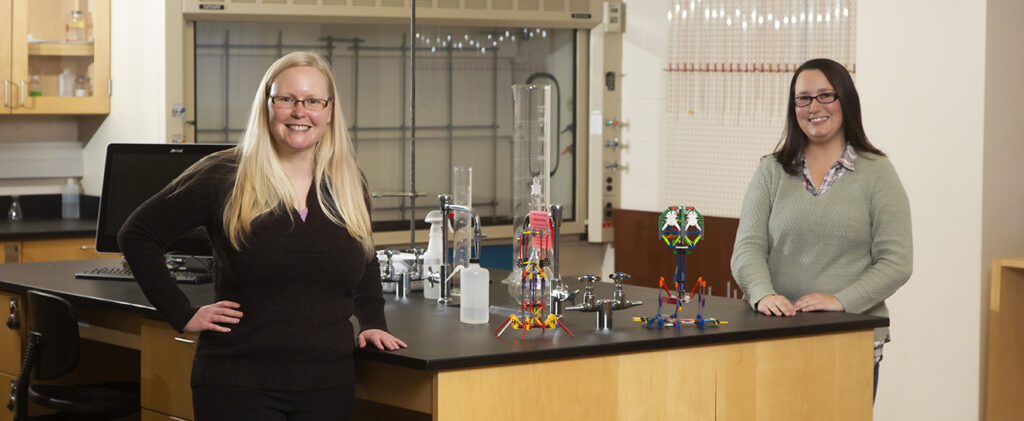
Virus Hunters
First-year science students at MSUM hunt viruses
Erin Hemme Froslie
We’ve paid more attention to viruses lately. As we watch one particular virus – COVID-19 – change our communities in profound ways, we might forget that there are millions of viruses in the world. Minnesota State University Moorhead junior Anna Madsen became an expert on one two years ago.
She took the introductory course, CHEM 275: Research-based General Chemistry Lab, also referred to as Virus Hunters, where she discovered a virus that nobody else had yet named and characterized.
The lab has been offered at MSUM for the past three years. It introduces students to scientific research early in their academic careers, says Michelle Tigges, associate professor of chemistry and biochemistry and one of the instructors.
Instead of replicating experiments, students learn chemistry and biology concepts by “hunting” phages – the viruses that infect bacteria (not humans). Students then study and document each phage’s characteristics. These details are added to a database established by the Howard Hughes Medical Institute (HHMI) where other scientists can tap the information for further research.
“We get to use our students’ drive to teach people all of the chemistry, math and biology that go into the discoveries that help us,” Tigges says.
The course is part of HHMI’s SEA-PHAGES (Science Education Alliance-Phage Hunters Advancing Genomics and Evolutionary Science) program, a two-semester, discovery-based undergraduate research course.
Tigges was introduced to the program when she attended a microbiology conference. She watched students present their research during one session and assumed they were graduate students. She later learned they were first-year undergraduate students. That convinced her it would be a great fit at MSUM.
“Usually, students need a lot of background to understand what’s going on in a laboratory setting,” Tigges says. “With this class, you learn everything as you’re working on it.”
In many ways, students in the lab become Indiana Joneses of the microbiology world.
Students discover viruses in bacteria that exist in the soil. The young scientists quickly progress from digging soil samples to practicing a variety of biochemistry techniques. When they run into problems in the lab, they troubleshoot. Eventually, students isolate their viruses, characterize their environment, and sequence their DNA.
“The overall, big scientific questions students explore in this lab are interesting, and it’s very doable in the time limits of the semester,” says Sara Anderson, associate professor of biosciences and a lab instructor.
Every semester, first-year students at MSUM find and characterize about 10 viruses, Tigges says. Since the students discover the phages, they also get to name the viruses.
Madsen and her lab partner, who happened to be her twin sister, named their phage Etta after a character from their favorite science fiction show, “Fringe.” Junior Kelsey Leach and her partner named their virus Booth after a character on “Bones.”
“If was a fun and valuable lab experience,” Leach says. “It was my first major exposure to what research is like in science.”
Both Madsen and Leach have since applied what they learned in their Virus Hunters class to independent research with bacteria that only grow in arctic conditions. Because of the lab, they became comfortable presenting research to their peers and other scientists, such as at the 2019 Undergraduate Research in the Molecular Sciences (URMS) conference. Leach was also the plenary speaker at the 2019 national HHMI Science Education Alliance Research Symposium in Virginia. They are both hoping to pursue a career in scientific research.
“I enjoy working in the lab,” Madsen says. “I wanted to go into a research-based career and this class confirmed it.”
While the public has become more aware of viruses and related research thanks to COVID-19, there is much about viruses researchers don’t know. Students in the Virus Hunters course are helping fill in that knowledge.
The discovery of these new phages can have real-life implications. For example, medical professionals have used the HHMI database to identify phages to treat patients with bacterial infections resistant to antibiotics, Anderson says.
“It’s possible that a phage our students find might someday be used to treat patients directly,” Anderson says. “It’s quite incredible.”